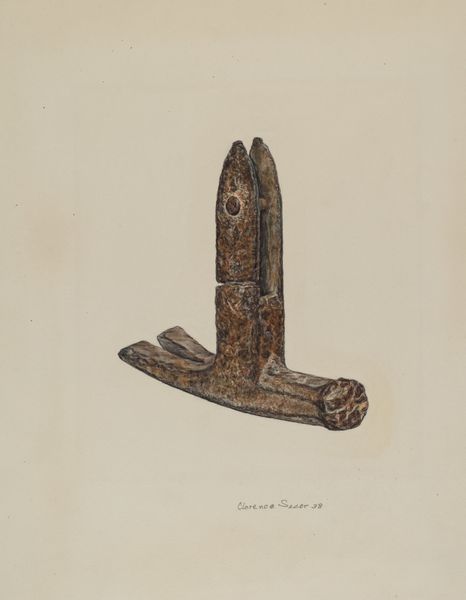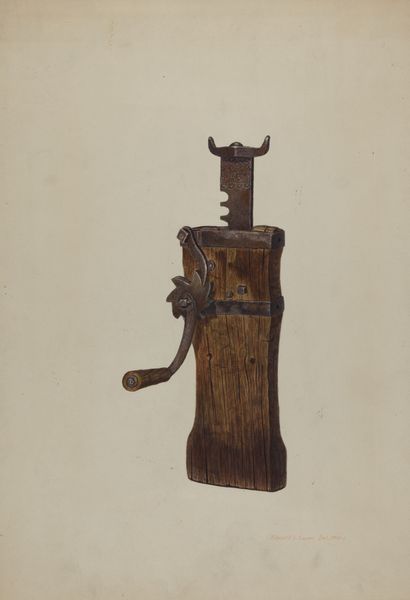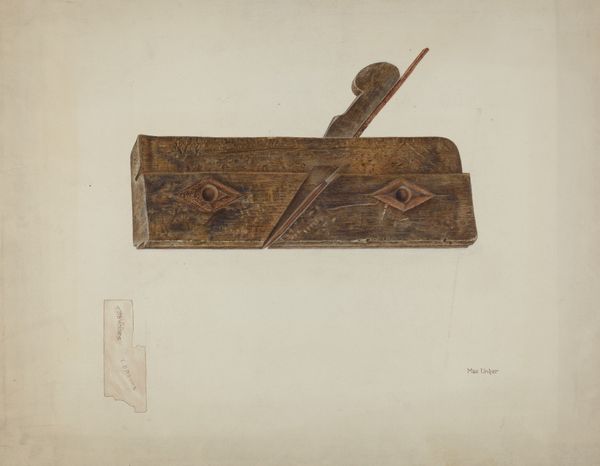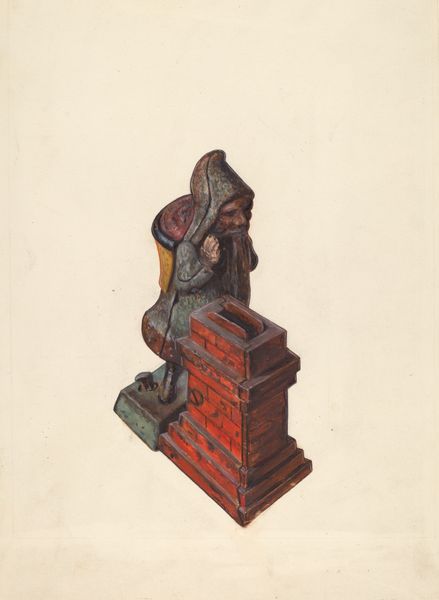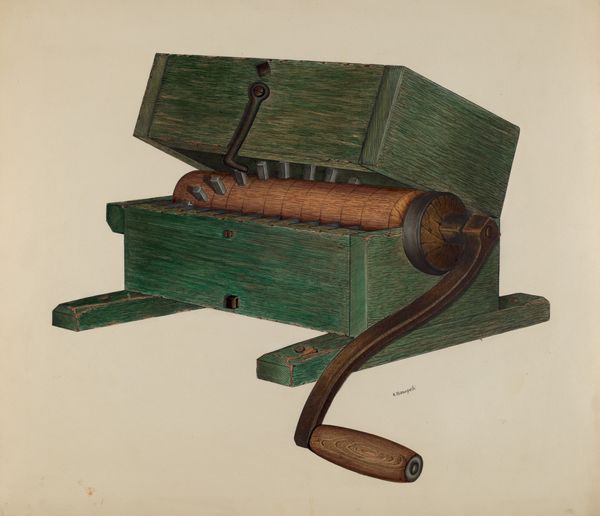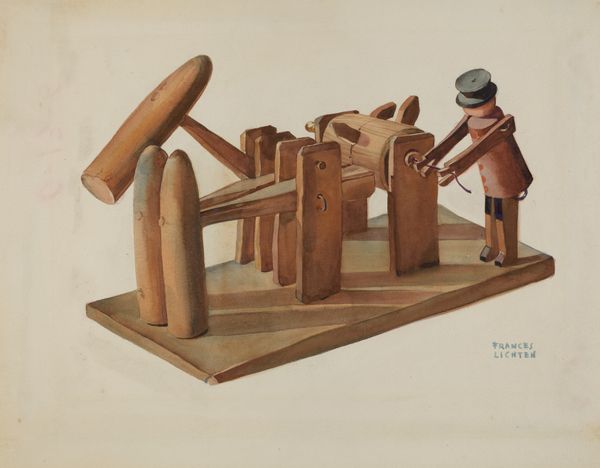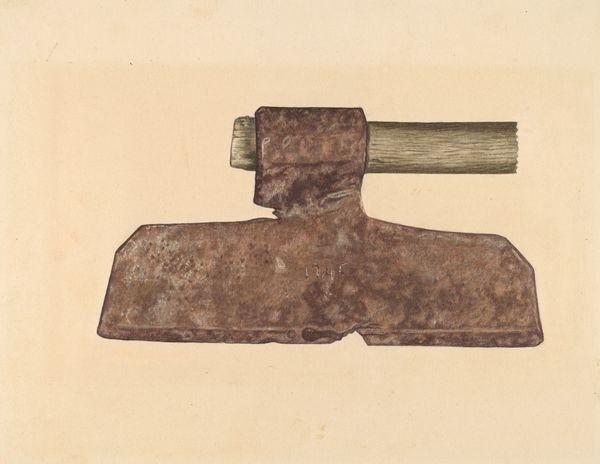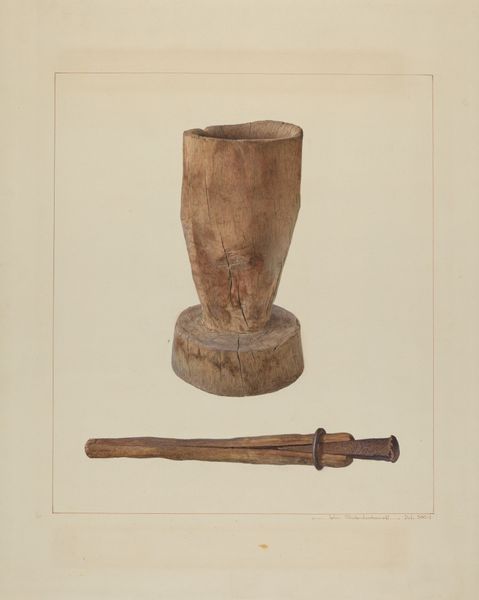
drawing, sculpture, charcoal
#
drawing
#
sculpture
#
charcoal drawing
#
figuration
#
sculpture
#
charcoal
#
charcoal
Dimensions: overall: 30.5 x 40.7 cm (12 x 16 in.) Original IAD Object: 6 1/2" high; 10" long; 2 5/8" deep
Copyright: National Gallery of Art: CC0 1.0
Editor: So, this drawing is titled "\"Creedmore\" Penny Bank" by Stanley Chin, created around 1940, rendered in charcoal, looking at an actual sculpture of the bank. The lighting is very dramatic. What's striking to me is the representation of everyday objects through art and what does this tell us about how value or identity is placed in it? What are your thoughts about this bank, from an art historical point of view? Curator: Good observation, it certainly reflects the socio-economic times. Notice how the subject, this "Creedmore" Penny Bank, which itself depicts a marksman, links financial incentives with militaristic precision. Think about the historical context. It comes from the mid-20th century when consumerism and ideas about patriotism were heavily intertwined. What public sentiments would something like this invoke, do you think? Editor: Well, I suppose the appeal of something like this would depend on the community; encouraging frugality through violence can seem quite complex to me, especially for younger consumers... but I can imagine how this artwork might've symbolized the idealized vision of the self-reliant, vigilant citizen during that era. It would remind one of their financial safety, so one does not require relying on community handouts. Curator: Exactly! And the use of art depicting everyday object to elevate and perhaps sanitize otherwise dark realities of the American people highlights the role of art itself in shaping societal values, making things like weaponization acceptable and more approachable by the population.. But also consider the institutions behind such objects, from factories producing them to banks distributing them, as key players in constructing the social narrative of that time. Editor: That gives me a lot to think about. It’s more than just a depiction; it’s an instrument reflecting values, like cultural history, but within a coin bank that promotes financial growth, all by design. Thank you for the background; now I want to explore the politics embedded within "fun" objects like toys, the military industrial complex... Curator: You've gotten to the real meat of this, the implications and its influences, now look how deeper societal and individual values interplay within these materials. Keep looking at art and consider how the value judgements that may be reflected in the work influence our experiences!
Comments
No comments
Be the first to comment and join the conversation on the ultimate creative platform.


